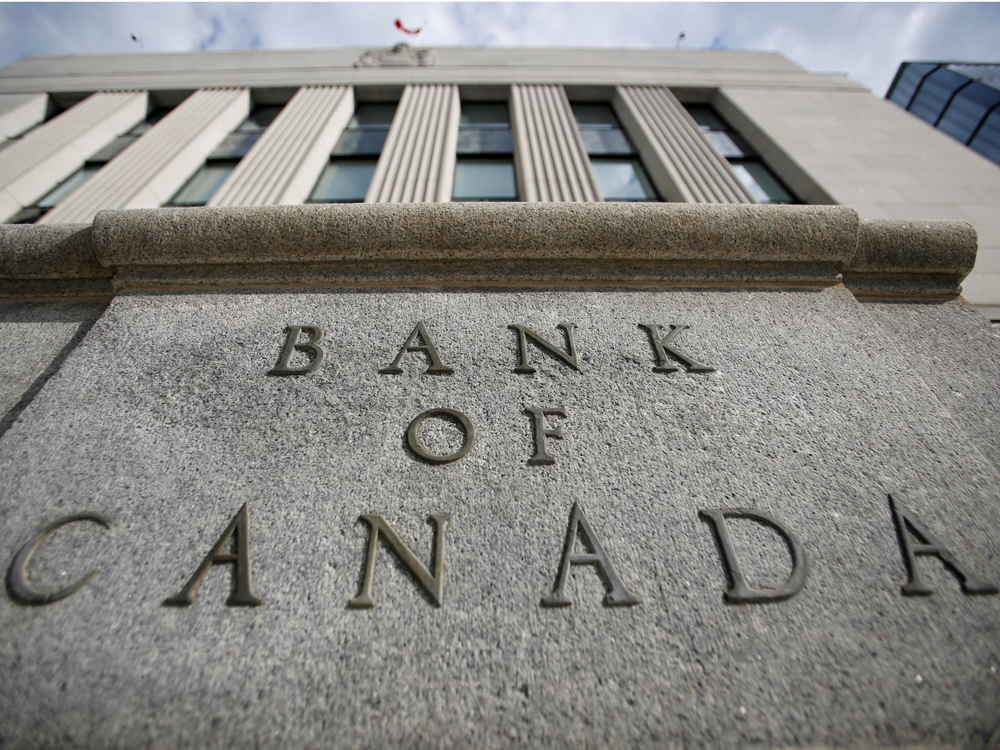It’s been so long since inflation was a story, it’s easy to forget that at the end of the day, prices are all the Bank of Canada is allowed to care about.
Policy makers sought to remind us of that this week.
When the central bank left interest rates unchanged on Wednesday, it emphasized that inflation was right at its rough target of two per cent. And the first speech by one of the institution’s leaders since early July was based on, you guessed it, the Bank of Canada’s latest thinking about inflation.
Deputy Governor Lawrence Schembri told a crowd at the Halifax Chamber of Commerce on Thursday that he and his colleagues remain confident that the link between economic growth and prices still holds. He flagged new Bank of Canada research that concludes that inflation rises and falls as the economy accelerates and slows, according to various price measures, which suggests that the Phillips curve still applies in Canada.
That’s a bigger deal than it probably sounds. The inverse relationship between employment and inflation, identified by New Zealander William Phillips in the late 1950s, is a subject of consternation among economists and investors. In many countries, including the United States, price pressures have been subdued, despite unprecedented monetary stimulus. Weak inflation was one of the reasons the Federal Reserve gave for cutting interest rates in July. In Japan and Europe, deflation is the bigger worry.
For some reason, the situation in Canada is different. The central bank noted that inflation was on target when it opted to leave interest rates unchanged this week. The dollar rose after that decision, at least in part because officials provided no hint that they were anxious to cut interest rates in response to the trade wars. That was a bit of a surprise. There was a widespread belief that the Bank of Canada would be forced to respond to the same pressures that prompted so many of its peers to cut interest rates this summer.
“Canada isn’t an island unto itself,” Darcy Briggs, a portfolio manager at Franklin Bissett Investment Management, said.
Very true. Schembri said the “trade war remains our primary concern and the biggest risk to our forecast,” adding that “things could get worse internationally, which would deliver a complex shock to our economy affecting both supply and demand.” Canadian business investment plunged the second quarter as U.S. President Donald Trump escalated his fight with China and demand for exports wobbled. “It is harder to see that there is going to be an immediate resolution,” Schembri said at a press conference after his speech.
Still, it’s possible that we’ve been discounting the Bank of Canada’s resolve to achieve its inflation target, officially the midpoint between one per cent and three per cent. Prices have been so stable, for so long, the public’s focus naturally shifts to more obvious concerns, such as stagnant wages and the U.S. president’s Twitter feed.
The Bank of Canada, however, only has one concern, as per its official marching orders from the federal government.
Schembri noted that the gap between current economic output and what the central bank estimates the economy can achieve without sparking inflation is “essentially closed.” You didn’t hear much about that ahead of this week’s policy announcement.
Instead, the emphasis was on when the Bank of Canada would follow all of the other central banks that have cut interest rates this year. Schembri’s remarks suggest the Canadian policy makers won’t follow until they see evidence of real trouble. That will test Bay Street’s commitment to the current consensus that rates are headed lower at the central bank’s next policy meeting at the end of October.
“Because of the persistently low inflation experienced in several major countries, some observers have gone so far as to declare the Phillips curve dead,” Schembri said. “Here at home, though, our experience has been different … The evidence of a close correlation between underlying inflation and the output gap bolsters our confidence in our inflation projections and in our framework for conducting monetary policy.”
Bottom line: Trump has shaken business confidence, and he causes politicos to lose their heads on a daily basis, but he hasn’t managed to break the faith of Canada’s central bank in its approach to economic oversight. Based on what it could see and reasonably project, an interest-rate cut would have risked faster inflation and tempted households to resume bingeing on debt.
So policy makers decided to wait for more information rather than take out insurance that it couldn’t prove was necessary. The benchmark rate is lower than inflation, anyone renewing their five-year mortgage today is doing so at a lower rate than he or she accepted previously, and exporters still are getting a boost from a favourable exchange rate. There is still stimulus in the system.
“The stance that we decided on yesterday is consistent with achieving our inflation target over the next two years,” Schembri told reporters. “We do think it provides sufficient stimulus to the Canadian economy to offset the dampening effects of the global trade war.”
• Email: kcarmichael@nationalpost.com | Twitter: carmichaelkevin

